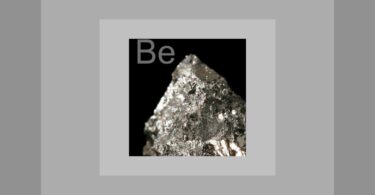Dear Elaine,
On going through the Everglades’ prescription, I have some questions for you.
The Sick Image
I have arranged Everglades’ sick image, as found in October’05 issue of Hpathy e-zine, with that of Baptisia (as you put from Dr Murphy’s MM), side by side – for a fair comparison, as below:
Everglades’ sick image
‘…. little “Everglades National Park” was not feeling well and running a fever at school.
……His fever rose to over 102 degrees, he was red-faced, hot and lethargic.
……. he was sweating profusely, chilly and wanted to be wrapped up.
…… His ears were bright red and he was extremely thirsty for ice cold water.
…… he smelled horrible! His sweat and breath were quite foul.’
Baptisia’s sick image (as of Dr Murphy’s MM)
‘Face: Dusky, stupid. Besotted look. Dark red.
… Great thirst
… Dull and confused mind. Inability to think. Indifference. Ideas confused. …
Discharges and exhalations fetid. Foul odor of the body, breath; of excretions, stools, sweat, urine etc. … influenza.
The besotted look, bleary eyes, aching head, sore throat, pains and soreness all over the body and profound prostration. These indicate Baptisia before any other remedy’.
Question 1: Do the sick images really tally?
I have made the last paragraph italicized purposefully because it contains the core of Baptisia’s sick image! Did Everglades look like that?
Putrid Fever
I am not sure whether the expression ‘Putrid Fever’ is being used in any contemporary medical literature. I searched for it extensively in the Internet, and could locate it in several Web-pages having the headings like Old Medical Terms, Archaic Medical Terms, etc. Putrid fever was also known as Typhus fever, Malignant fever, Spotted fever, Shipboard fever, Jail fever, etc. etc.
Whatever be the name, I have come to know that Putrid Fever corresponds to a specific type of severe illness having a group of characteristic signs and symptoms. Let me share with you as well as many other learned homeopaths of Hpathy, an online write up on Putrid Fever written by Dr. Buchan. It’s from his classic book entitled ‘Domestic Medicine’ (2nd Ed) published in 1785. The write up could be found in Chapter XX – Malignant, Putrid, or Spotted Fever. The Internet link is –
http://www.americanrevolution.org/medicine.html
Question 2: Was Everglades really sick with Putrid Fever?
Rubric: Fever – Putrid
The rubric, Fever – Putrid, is found in different repertories as presented below:
Fever – Putrid
Repertory
Rubric/ Remedies
Kent’s
NA
Boger-Boenninghausen
Arn, Ars, bell, BRY, canth, carb-v, Chin, dig, Hyo, ip, Merc, merc-c, Mur-ac, nux-m, Nux-v, op, pho, pho-ac, pul, RHUS-T, sul
Phoenix
– ditto- (having the reference of Boger-Boenninghausen)
Synthesis 9.1
NA (referred to Zymotic Fever, having 43 remedies)
Repertorium Universale
NA (referred to Zymotic Fever, having 54 remedies)
Murphy
ars., BAPT., crot-h., ECHI., lach., mur-ac., phos-ac., PYROG., sec.
I searched in the Encyclopædia Homeopathica (EH) of RADAR having the basic database package only; it revealed the following 20 remedies to be useful in Putrid Fever:
Acet-ac, Arn, Ars, Berb, Cetr, Chin, Chlor, Crot-h, Echi-p, Hippoz, Kali-p, Kreos, Merc, Mur-ac, Nux-m, Ph-ac, Phos, Puls, Rat, Sin-n.
I think, more remedies would come up using the latest database package of EH!
The nine remedies selected by Dr Murphy under the heading ‘Fever – Putrid’ could be found under Septic/Zymotic Fever in any of the repertories mentioned. However, while Boger-Boennighausen considered 21 remedies for Putrid Fever, and Synthesis as well as RU referred to more or less 50 remedies for Putrid/Zymotic Fever – then, why Dr Murphy chose only nine remedies – not understood! I think, the list is too conservative. If horrible smell of a patient during fever is considered synonymous with Putrid Fever (which I don’t think so), then in cases of typhoid/septic/puerperal fever having horrible odor of the patient, this meager number of remedies would surely lead homeopaths to failure in many cases.
Question 3: In Everglades’ case, do you think the choice of the rubric ‘Fever – Putrid’ has been wise enough?
Missing Symptoms!
Regarding why Mercurius does not fit Everglades’ sickness, you opined –
“We were also missing two very common Mercury symptoms in the case–the aggravation from heat and the excessive salivation.”
Your assertion reminded me of Negative Matching of a Remedy, which Dr Murphy has explained eloquently in his book ‘Case Analysis and Prescribing Techniques’. Under the section – Common Mistakes in Prescribing, Dr Murphy wrote:
“Negative Matching of a Remedy – This is the worst habit of most people who do homeopathy. ……………… Don’t match what they don’t have!! …………….You can’t have preconceived ideas. You can’t say that you can’t prescribe Chamomilla because they aren’t irritable enough, or they aren’t thirsty enough for Phosphorus, or they aren’t this or that. You try to find that one that fits what you see best. Ingrain that in your mind. When you read the materia medica, only look for what they have, and then try to get the general feel, the disposition, or something like that, whether they’re hot or cold, etc. ………….. Do positive matching – read what you’re looking for. Otherwise you say this person looks like he needs Sulphur, but here are 110 pages of symptoms for Sulphur and no one will match them all. So there are 1100 symptoms that they don’t have that you can use to talk yourself out of giving them Sulphur. It’s a bad, bad mistake.”
Everglades was sweating profusely. Interestingly, none of the following rubrics (taken from Synthesis 9.1) have Baptisia!:
FEVER – CHILL; with – heat and perspiration
FEVER – SHIVERING, with – and perspiration with heat
FEVER – SUCCESSION of stages – chill – followed by – heat – with perspiration
FEVER – SUCCESSION of stages – chill – followed by – heat – then perspiration
FEVER – SUCCESSION of stages – heat – followed by – perspiration
FEVER – PERSPIRATION – heat, with
CHILL – PERSPIRATION – with perspiration; chill
Moreover, it is not found in the case record that Everglades had –
– besotted look,
– bleary eyes,
– aching head,
– sore throat,
– pains and soreness all over the body,
– profound prostration
– inability to think, indifference and ideas confused.
Question 4: Do you think, ruling out of Mercurius for negative matching of only two symptoms was justified?
Best regards.
Mir Mostafa Kamal
[email protected]
Dhaka, Bangladesh.
11 December 2005
————————————————————
ELAINE LEWIS REPLIES TO DR. KAMAL
Moreover, it is not found in the case record that Everglades had –
– besotted look,
– bleary eyes,
– aching head,
– sore throat,
– pains and soreness all over the body,
– profound prostration
– inability to think, indifference and ideas confused.
Question 4: Do you think, ruling out of Mercurius for negative matching of only two symptoms was justified?
Dear Dr. K,
Now who’s doing negative matching? You’re saying, “How can it be Baptisia? He doesn’t have a sore throat! He doesn’t have an inability to think!” If these were keynotes of Baptisia, you might have something there. Actually, no one can have every symptom of a remedy, it’s impossible. What remedies generally have, especially the polychrests, are a few identifiable keynotes that identify them, regardless of the disease or condition. Robin Murphy likes to say, “What are the Keynotes of London? Big Ben, the Thames. Buckingham Palace, the Guards, etc. What are the Keynotes of Paris? Well, you know what they are. The polychrest remedies are similarly identifiable.
Yes, it’s true, Robin Murphy frequently warns against “negative matching”. An example would be: Don’t give Phosphorus to that diabetes patient, he’s not sociable and he isn’t better for consolation either! Robin Murphy would say: This isn’t a constitutional (or “fundamental”) case; we’re treating the top layer here, which is a pathology. The patient has a great thirst for ice cold drinks, a desire for sweets, and Phosphorus is in bold for “sugar in the urine”. There are no mental/emotional symptoms in this case. He may be constitutionally an introverted Nat-mur., but the pathology is not Nat-mur, it’s Phosphorus.
Sometimes you can arrive at a remedy based on etiology. A person is given Nat-sulph. because he has been in a horrible depression since a head injury. In such a case, covering the etiology will afford better results than matching the patient to the symptoms of the remedy. “How can we give Nat-sulph? This patient isn’t worse from damp weather! He doesn’t weep from music!” But, he does have “Ailments from head injury”, and that trumps the totality of symptoms.
“Etiology Over-rules Symptomatology”.
On the other hand, I can recall Roger Morrison saying, while presenting a case, “We could give Calc-carb to this patient, but we aren’t happy with that, are we?” And everyone wanted to know, “Why aren’t we happy with it?” And he said, “Because it’s a polychrest, it’s not a small remedy known for just one use. When we see Calc-carb, we expect to see Calc-carb! The sluggishness, the slowness, the desire for eggs, desire for sweets. the responsible nature, the desire for order, the tendency to over-work–in other words, we expect to see what Calc-carb is known for.”
Let me give you an example from my own experience with this. A few years ago several homeopaths were taking an online case from someone named Thomas whose complaint was that he had such horrible social phobia that he would get a headache everyday at work from having to talk to customers and co-workers; however, he pointed out that at night, he would change completely into a confident party-animal! One homeopath wanted to give him Medorrhinum straight away, and another, on hearing he ate 23 eggs a week, wanted to give him Calc-carb!
I said, “I don’t like it for Medorrhinum. He’s got the wrong food desires and he’s chilly and has cold feet and Medorrhinum’s hot with burning feet and he has no particular feeling about the ocean and so on.” I was accused of negative matching. Well, upon further investigation, we found out his current condition began around the time he was using psychadellic mushrooms–because I was hearing so many bizarre symptoms I finally said, “Have you ever taken drugs?” I looked up Agaricus–the mushroom– in Kent’s Materia Medica, and there was the whole case, including the night time amelioration and the desire for eggs I found in Murphy’s Repertory. So now the case made sense, we had the etiology and at least two confirmatory symptoms. So, as you can see, it really was significant that we could find no confirmatory symptoms for Medorrhinum in the case; it was a big red flag, in other words.
So, how do we reconcile these seemingly disparate approaches of Morrison and Murphy? The answer is that Morrison was doing a constitutional case and Murphy was doing a lesion case–a top layer/pathology case. When people have said to Murphy, “How can you give Pulsatilla to a patient who’s not crying?” he says, “When the case has no mentals. When a patient has eaten too much ice cream and has indigestion, there are no mentals in the case. It’s a physical complaint. If you took the constitutional mentals of this patient because you heard that the mentals are the most important part of every case, and repertorized them with the physical complaint, you’d get the wrong remedy.”
So, how do we reconcile their approaches? We don’t have to, they’re both right. They’ve adjusted their prescribing based on the kind of case they have. The same Robin Murphy who says, “Don’t do negative matching will also say, “You have to confirm your remedy by checking for keynotes,” which is just what Morrison was saying: How can we give a polychrest like Calc-carb. when all we see in the case that goes for calc-carb. is constipation? If it is calc-carb, you’d expect to see more than just that; that’s the point he’s trying to make.
Just about every remedy has a healthy presentation (constitution), a “fundamental” presentation consisting of various “amendments to the constitution”–organs and systems that malfunction, and “mentals” that can best be described as “neurotic”, and the pathological or “lesional” state which is comprised of pathological tissue changes and usually a disease diagnosis. If we see a pathological Phosphorus, we don’t concern ourselves that he isn’t tall and thin. That’s a constitutional Phosphorus. If we ever get our patient back to his constitutional layer, we can look for things like body type and other normal, healthy traits to determine the remedy.
Returning to Kelly’s son’s case, it’s fine to suspect Mercury because of the foul odors, but then, you have to see if you can confirm your suspicion by checking for what you know to be true about a Mercury illness–the increased salivation, the intolerance to slight changes in temperature, the sweating without relief, etc. If you can’t “confirm” Mercury, it’s best to look at other “bad-odor” remedies, like Pyrogen or Bapitsia; more importantly, Baptisia matches the “flu” better than Mercury, because you have to match the state first, the symptoms second. We need a flu remedy here, first and foremost. If Baptisia is better-known to be a flu remedy, then that raises it’s value as a contender in this case.
If you look up Mercury in Morrison’s Materia Medica, you see nothing about the flu. It doesn’t mean it can’t be a flu remedy, but it’s not what it’s known for. If you look up Baptisia, on the other hand, Morrison has “Influenza” in bold. Baptisia is a better choice for the state, and there are many symptoms to confirm it, most notably, the offensive odor and the lethargy. Mercury is weak for causing the state. The remedy that you give has to be able to cause what you have in over-dose.
Thanks for taking the time to contribute to the ezine!






